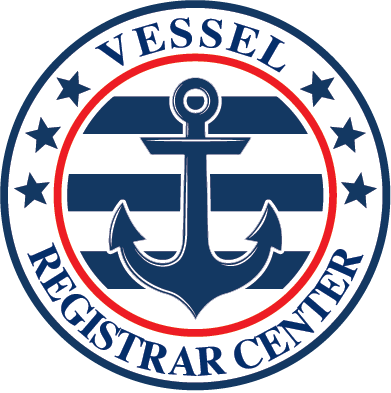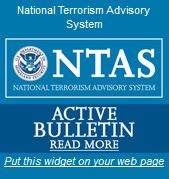174.1 Applicability; preemptive effect.
This part establishes a standard numbering system for vessels and a uniform vessel casualty reporting system for vessels by prescribing requirements applicable to the States for the approval of State numbering systems. The regulations in subparts A, B, and D of this part have preemptive effect over conflicting State or local regulation. The regulations in subpart C of this part have preemptive effect over State or local regulation within the same field, except to the extent that Congress requires the Coast Guard to allow State casualty reporting systems pursuant to 46 U.S.C. chapter 131.
[USCG-2003-14963, 77 FR 18701, Mar. 28, 2012]
174.3 Definitions.
As used in this part –
Airboat means a vessel that is typically flat-bottomed and propelled by an aircraft-type propeller powered by an engine.
Auxiliary sail means a vessel with sail as its primary method of propulsion and mechanical propulsion as its secondary method.
Cabin motorboat means a vessel propelled by propulsion machinery and providing enclosed spaces inside its structure.
Certificate of number means the certificate required by 33 CFR 173.21.
Charter fishing means a vessel carrying a passenger(s) for hire who is (are) engaged in recreational fishing.
Commercial fishing means a vessel that commercially engages in the catching, taking, or harvesting of fish which, either in whole or in part, is intended to enter commerce through sale, barter, or trade.
Houseboat means a motorized vessel that is usually non-planing and designed primarily for multi-purpose accommodation spaces with low freeboard and little or no foredeck or cockpit.
Hull identification number or HIN means a number required by 33 CFR 181.23.
Inboard, in the context of an engine, means an engine mounted inside the confines of a vessel which powers a drive shaft that turns a water jet impeller or that runs through the bottom of the hull and is attached to a propeller at the other end.
Inflatable boat means a vessel that uses air-filled flexible fabric for buoyancy.
Open motorboat means a vessel equipped with propulsion machinery and having an open load carrying area that does not have a continuous deck to protect it from the entry of water.
Operate means use, navigate, or employ.
Operator means the person who is in control or in charge of a vessel while it is in operation.
Outboard, in the context of an engine, means an engine with propeller or water jet integrally attached, which is usually mounted at the stern of a vessel.
Owner means a person, other than a secured party, having property rights in or title to a vessel, including persons entitled to use or possess a vessel subject to a security interest in another person, but excluding lessees under a lease not intended as security.
Paddlecraft means a vessel powered only by its occupants, using a single or double bladed paddle as a lever without the aid of a fulcrum provided by oarlocks, thole pins, crutches, or similar arrangements.
Person means an individual, firm, partnership, corporation, company, association, joint-stock association, or governmental entity and includes a trustee, receiver, assignee, or similar representative of any of them.
Personal watercraft means a vessel propelled by a water-jet pump or other machinery as its primary source of motive power and designed to be operated by a person sitting, standing, or kneeling on the vessel, rather than sitting or standing within the vessel’s hull.
Pod drive means an engine mounted in front of the transom of a vessel and attached through the bottom of the hull to a steerable propulsion unit.
Pontoon boat means a vessel with a broad, flat deck that is affixed on top of closed cylinders which are used for buoyancy, the basic design of which is usually implemented with two rows of floats as a catamaran or with three rows of floats as a trimaran.
Reporting authority means a State listed in 33 CFR part 173, Appendix A, as having a numbering system approved by the Coast Guard or the Coast Guard itself when a numbering system has not been approved.
Rowboat means an open vessel manually propelled by oars.
Sail only means a vessel propelled only by sails.
State means a State of the United States, the District of Columbia, American Samoa, Guam, the Commonwealth of the Northern Mariana Islands, Puerto Rico, the U.S. Virgin Islands, and any other territory or possession of the United States.
State of principal operation means the State in whose waters a vessel is or will be operated most during a calendar year.
Sterndrive means an engine, powering a propeller using shifts and gears, mounted in front of the transom of a vessel and attached through the transom to a drive unit that is similar to the lower unit of an outboard, which may also be known as an inboard-outdrive or an inboard-outboard.
Vessel means every description of watercraft or other artificial contrivance used, or capable of being used, as a means of transportation on water.
[USCG-2003-14963, 77 FR 18701, Mar. 28, 2012]
174.5 Requirements for approval.
The Commandant approves a State numbering system if he or she finds, after examination of the information submitted by a State, that the State numbering system and vessel casualty reporting system meet the requirements of this part, 46 U.S.C. 6102, and 46 U.S.C. Chapter 123.
[CGD 97-023, 62 FR 33365, June 19, 1997, as amended by USCG-1998-3799, 63 FR 35533, June 30, 1998; USCG-2003-15404, 68 FR 37742, June 25, 2003]
174.7 Approval procedure.
To obtain approval by the Commandant of a numbering system or of any revision to a numbering system, an authorized representative of the State must submit three copies of the State laws, regulations, forms, and policy statements, if any, that pertain to the numbering system or revision to Commandant (CG-BSX), Attn: Office of Auxiliary and Boating Safety, U.S. Coast Guard Stop 7501, 2703 Martin Luther King Jr. Avenue SE., Washington, DC 20593-7501.
[CGD 72-54R, 37 FR 21402, Oct. 7, 1972, as amended by CGD 82-010, 48 FR 8273, Feb. 28, 1983; CGD 88-052, 53 FR 25122, July 1, 1988; CGD 96-026, 61 FR 33669, June 28, 1996; USCG-2008-0179, 73 FR 35024, June 19, 2008; USCG-2010-0351, 75 FR 36287, June 25, 2010; USCG-2014-0410, 79 FR 38448, July 7, 2014]
174.11 Applicability of State numbering system.
- Except as allowed in paragraph (c) of this section, a State numbering system must require the numbering of vessels to which § 173.11 of this chapter applies.
- A State numbering system may require the numbering of any vessel subject to the jurisdiction of the State unless prohibited by the regulations in Part 173 of this chapter.
- A State numbering system may exempt from its numbering requirements any vessel or class of vessels to which § 173.13 of this chapter applies.
174.13 Owner or operator requirements.
A State numbering system must contain the requirements applicable to an owner or a person operating a vessel that are prescribed in the following sections of Part 173:
- Paragraph (a) of § 173.15 Vessel number required.
- Section 173.19 Other numbers prohibited.
- Paragraph (a) of § 173.21 Certificate of number required.
- Section 173.23 Inspection of certificate.
- Section 173.25 Location of certificate of number.
- Section 173.29 Notification of issuing authority.
- Section 173.71 Application for certificate of number.
- Section 173.73 Duplicate certificate of number.
- Section 173.77 Validity of certificate of number.
(46 U.S.C. 1451, 1467, 1488; 49 CFR 1.46(n)(1))
[CGD 77-117, 44 FR 42195, July 19, 1979]
174.14 State numbering system optional sections.
In addition to the requirements in § 174.13, a State numbering system may contain any of the other requirements applicable to a vessel owner or operator prescribed in Part 173.
(46 U.S.C. 1451, 1467, 1488; 49 CFR 1.46(n)(1))
[CGD 77-117, 44 FR 42195, July 19, 1979, as amended by USCG-1999-5832, 64 FR 34715, June 29, 1999]
174.15 Validation stickers.
- If a State issues validation stickers, its numbering system must contain the requirements that stickers must be displayed within 6 inches of the number and the stickers must meet the requirements in paragraphs (b) and (c) of this section.
- Validation stickers must be approximately 3 inches square.
- The year in which each validation sticker expires must be indicated by the colors, blue, international orange, green, and red, in rotation beginning with blue for stickers that expire in 1973.
174.16 Verification of hull identification numbers (HINs).
- As used in this section, “action” means an action by an issuing authority listed in 33 CFR part 173, Appendix A, to issue, renew, or update the ownership information for a certificate of number under this part but does not include the issuance of a temporary certificate under 33 CFR 174.21.
- As of January 1, 2017, before taking any action relating to a vessel imported or manufactured on or after November 1, 1972, the issuing authority must determine whether the vessel has a primary HIN meeting the requirements of 33 CFR part 181, subpart C.
- If, pursuant to paragraph (b) of this section, the issuing authority determines that the vessel does not have a primary HIN meeting the requirements of 33 CFR part 181, subpart C, then before taking any action the issuing authority must –
- Assign such a primary HIN to the vessel; and
- Verify that the owner of the vessel has permanently affixed the assigned primary HIN to the vessel in compliance with 33 CFR part 181, subpart C.
[USCG-2003-14963, 77 FR 18701, Mar. 28, 2012]
174.17 Contents of application for certificate of number.
- An application for a certificate of number must contain the following information:
- Name of owner.
- Address of owner, including ZIP code.
- Owner identifier, which must be the owner’s tax identification number, date of birth together with driver’s license number, or date of birth together with other unique number.
- State of principal operation.
- Number previously issued by an issuing authority.
- Application type: Authorized terms are “new number”, “renewal of number”, or “transfer of ownership”.
- Primary operation: Authorized terms are, “charter fishing”, “commercial fishing”, “commercial passenger carrying”, “dealer or manufacturer demonstration”, “other commercial operation”, “pleasure”, or “rent or lease”.
- Make and model of vessel.
- Model year.
- Hull identification number, if any.
- Overall length of vessel.
- Vessel type: Authorized terms are “air boat”, “auxiliary sail”, “cabin motorboat”, “houseboat”, “inflatable boat”, “open motorboat”, “paddlecraft”, “personal watercraft”, “pontoon boat”, “rowboat”, “sail only”, or “other”.
- Hull material: Authorized terms are “aluminum”, “fiberglass”, “plastic”, “rubber/vinyl/canvas”, “steel”, “wood”, or “other”.
- Propulsion type: Authorized terms are “air thrust”, “manual”, “propeller”, “sail”, “water jet”, or “other”.
- Engine drive type: Authorized terms are “inboard”, “outboard”, “pod drive”, “sterndrive”, or “other”.
- Fuel: Authorized terms are “electric”, “diesel”, “gas”, or “other”.
- Signature of the owner.
- An application made by a manufacturer or dealer for a number that is to be temporarily affixed to a vessel for demonstration or test purposes may omit the information under paragraphs (a)(9) through (a)(17) of this section.
- An application made by an owner of a vessel without propulsion machinery may omit the information under paragraphs (a)(16) and (a)(17) of this section.
- For an issuing authority listed in 33 CFR part 173, Appendix A on April 27, 2012, the requirements of paragraphs (a) and (b) of this section apply on January 1, 2017. Between April 27, 2012 and January 1, 2017, the issuing authority may continue to accept applications containing the contents required by that reporting authority prior to April 27, 2012.
[USCG-2003-14963, 77 FR 18702, Mar. 28, 2012]
174.19 Contents of a certificate of number.
- Except as allowed in paragraph (b) of this section, each certificate of number must contain the following information:
- Number issued to the vessel.
- Expiration date of the certificate.
- State of principal operation.
- Name of owner.
- Address of owner, including ZIP code.
- Primary operation: Authorized terms are, “charter fishing”, “commercial fishing”, “commercial passenger carrying”, “dealer or manufacturer demonstration”, “other commercial operation”, “pleasure”, or “rent or lease”.
- Hull identification number, if any.
- Make and model of vessel.
- Model year.
- Overall length of vessel.
- Vessel type: Authorized terms are “air boat”, “auxiliary sail”, “cabin motorboat”, “houseboat”, “inflatable boat”, “open motorboat”, “paddlecraft”, “personal watercraft”, “pontoon boat”, “rowboat”, “sail only”, or “other”.
- Hull material: Authorized terms are “aluminum”, “fiberglass”, “plastic”, “rubber/vinyl/canvas”, “steel”, “wood”, or “other”.
- Propulsion type: Authorized terms are “air thrust”, “manual”, “propeller”, “sail”, “water jet”, or “other”.
- Engine drive type: Authorized terms are “inboard”, “outboard”, “pod drive”, “sterndrive”, or “other”.
- Fuel: Authorized terms are “electric”, “diesel”, “gas”, or “other”.
- A certificate of number issued to a manufacturer or dealer for use on a vessel for test or demonstration purposes may omit the information under paragraphs (a)(7) through (a)(15) of this section if the word “manufacturer” or “dealer” is plainly marked on the certificate.
- A certificate of number issued for a vessel without propulsion machinery may omit paragraphs (a)(14) and (a)(15) of this section if the words “manual vessel” are plainly marked on the certificate.
- An issuing authority may print on the certificate of number a quotation of State boating regulations or other boating-related information, such as safety reminders, registration, or law enforcement contact information.
- For an issuing authority listed in Appendix A of this part on April 27, 2012, the requirements of paragraphs (a) and (b) of this section apply on January 1, 2017. Between April 27, 2012 and January 1, 2017, the issuing authority may continue to issue certificates of number containing the contents in effect on April 27, 2012.
[USCG-2003-14963, 77 FR 18702, Mar. 28, 2012]
174.21 Temporary certificates.
- An issuing authority may issue a temporary certificate of number, valid for no more than 60 days from its date of issuance.
- Each temporary certificate must contain the following information:
- Vessel’s hull identification number, if any.
- Make of vessel.
- Overall length of vessel.
- Type of propulsion.
- State in which vessel is principally operated.
- Name of owner.
- Address of owner, including ZIP code.
- Signature of owner.
- Date of issuance.
- Notice to the owner that the temporary certificate is valid for the time it specifies, not to exceed 60 days from the date of issuance.
- For an issuing authority listed in 33 CFR part 173, Appendix A on April 27, 2012, the requirements of paragraph (b) of this section apply on January 1, 2017. Between April 27, 2012 and January 1, 2017, the issuing authority may continue to issue temporary certificates containing the contents in effect on April 27, 2012.
[USCG-2003-14963, 77 FR 18702, Mar. 28, 2012]
174.23 Form of number.
- Each number must consist of two capital letters denoting the State of the issuing authority, as specified in Appendix A of Part 173 of this chapter, followed by –
- Not more than four numerals followed by not more than two capital letters (example: NH 1234 BD); or
- Not more than three numerals followed by not more than three capital letters (example: WN 567 EFG).
- A number suffix must not include the letters “I”, “O”, or “Q,” which may be mistaken for numerals.
174.25 Size of certificate of number.
Each certificate of number must be approximately 2 1/2 by 3 1/2 inches.
174.27 Duration of certificate of number.
A certificate of number must not be valid for more than 3 years.
174.29 Temporary certificate of number.
A State may issue a temporary certificate of number that is effective for not more than 60 days.
174.31 Terms imposed by States for numbering of vessels.
A State numbering system may condition the issuance of a certificate of number on –
- Title to, or other proof of ownership of a vessel except a recreational-type public vessel of the United States; or
- Proof of liability insurance for a vessel except a recreational-type public vessel of the United States; or
- The payment of State or local taxes, except for a recreational-type public vessel of the United States.
[CGD 72-54R, 37 FR 21402, Oct. 7, 1972, as amended by USCG-2003-15708, 70 FR 13105, Mar. 18, 2005]
174.101 Applicability of State casualty reporting system.
- A State casualty reporting system must require the reporting of vessel casualties and accidents involving vessels to which § 173.51 of this chapter applies.
- The State casualty reporting system may also require vessel casualty or accident reports for property damage in amounts less than that required under § 173.55 of this chapter.
(46 U.S.C. 1486; 49 CFR 1.46(n)(1))
[CGD 72-54R, 37 FR 21402, Oct. 7, 1972, as amended by CGD 76-155, 44 FR 5309, Mar. 25, 1979; CGD 82-015, 54 FR 5610, Feb. 6, 1989]
174.103 Administration.
The State casualty reporting system must be administered by a State agency that –
- Will provide for the reporting of all casualties and accidents prescribed in § 173.55 of this chapter;
- Receives reports of vessel casualties or accidents required in § 174.101;
- Reviews each accident and casualty report to assure the accuracy and completeness of each report;
- Determines the cause of casualties and accidents reported based on information available and indicates the apparent cause on the casualty report or on an attached page;
- Notifies the Coast Guard, in writing, when a problem area in boating safety peculiar to the State is determined, together, with corrective measures instituted or recommended; and
- Reports on vessel numbering and vessel casualties and accidents as required in Subpart D of this part.
(46 U.S.C. 1486; 49 CFR 1.46(n)(1))
[CGD 72-54R, 37 FR 21402, Oct. 7, 1972, as amended by CGD 76-155, 44 FR 5309, Mar. 25, 1979]
174.105 Owner or operator casualty reporting requirements.
A State casualty reporting system must contain the following requirements of Part 173 applicable to an owner or a person operating a vessel:
- Section 173.55 Report of casualty or accident.
- Section 173.57 Casualty or accident report.
- Section 173.59 Where to report.
(46 U.S.C. 1451, 1467, 1488; 49 CFR 1.46 (n)(1))
[CGD 77-117, 44 FR 42195, July 19, 1979]
174.106 State casualty reporting system optional sections.
In addition to the requirements in § 174.105, a State casualty reporting system may contain any of the other requirements applicable to a vessel owner or operator prescribed in Part 173.
(46 U.S.C. 1451, 1467, 1488; 49 CFR 1.46 (n)(1))
[CGD 77-117, 44 FR 42195, July 19, 1979, as amended by USCG-1999-5832, 64 FR 34715, June 29, 1999]
174.107 Contents of casualty or accident report form.
Each form for reporting a vessel casualty or accident must contain the information required in § 173.57 of this chapter.
174.121 Forwarding of casualty or accident reports.
Within 30 days of the receipt of a casualty or accident report, the reporting authority receiving the report must forward a paper or electronic copy of that report to the Commandant (CG-BSX-2), Attn: Boating Safety Division, U.S. Coast Guard Stop 7501, 2703 Martin Luther King Jr. Avenue SE., Washington, DC 20593-7501.
[USCG-2003-14963, 77 FR 18702, Mar. 28, 2012, as amended by USCG-2014-0410, 79 FR 38448, July 7, 2014]
174.123 Annual report of vessels.
Before March 1 of each year, each State that has an approved numbering system must prepare and submit Coast Guard Form CGHQ-3923 to the Coast Guard.
[USCG-2016-0498, 82 FR 35089, July 28, 2017]
174.125 Coast Guard address.
The report required by § 174.123 of this subpart must be sent to the Commandant (CG-BSX-2), Attn: Boating Safety Division, U.S. Coast Guard Stop 7501, 2703 Martin Luther King Jr. Avenue SE., Washington, DC 20593-7501.
[USCG-2003-14963, 77 FR 18703, Mar. 28, 2012, as amended by USCG-2014-0410, 79 FR 38448, July 7, 2014]
Authority:
46 U.S.C. 6101 and 12302; Department of Homeland Security Delegation No. 0170.1 (92).
Source:
CGD 72-54R, 37 FR 21402, Oct. 7, 1972, unless otherwise noted.




